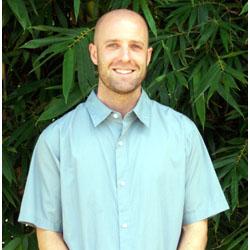Barra, Redclaw and Roses can be Mixed
Published on 08 May, 2003
What do barramundi, redclaw crayfish and roses have in common? Visitors to Agro-Trend were able to find out.
Brett Roe is with Central Queensland University’s Plant Science Group based in Rockhampton. His research is in the area of polyculture – where two or more species are combined in the same culture system in an effort to maximise profitability through increased yields.
 He is currently researching the integration of industrial wastewater, barramundi culture, red claw culture, rose hydroponics and constructed wetlands. Additional research interests include wetland biodiversity, heavy metal bio-accumulation and ecological engineering.
He is currently researching the integration of industrial wastewater, barramundi culture, red claw culture, rose hydroponics and constructed wetlands. Additional research interests include wetland biodiversity, heavy metal bio-accumulation and ecological engineering.
His presentation at this year’s Agro-Trend outlined ways to develop and integrate polyculture, constructed wetlands and floral hydroponics technologies to maximise broad-based socio-economic benefits from the use and re-use of water and industrial wastewater.
“Polyculture is a method of aquaculture which takes advantage of existing custodial niches to increase food production without added water, feed or energy inputs.
“When integrated with polyculture, constructed wetlands can provide effective water quality control, can support regional biodiversity and are largely self-maintaining, requiring minimal skilled labour over the life of the industry.
“When this occurs, benefits include employment and education opportunities, marketable agriproducts, aquatic pollution control, carbon dioxide sequestration, and biodiversity creation and support.
Mr Roe said engineered systems of this kind established a benchmark for ecologically sustainable and equitable socio-economic growth in Queensland.
“The engineering principles and methods used to develop the system can be adopted in various agribusiness, industry and municipality applications,” he added.
Recently returned from Western Australia, Mr Roe presented his research at the OZWATER convention and gave seminars at University of Western Australia, Curtain University, Edith Cowen University, the Western Australia Maritime Training, Western Power Corporation, Western Australian Conservation Council and the Western Australia Marron Growers Association.

